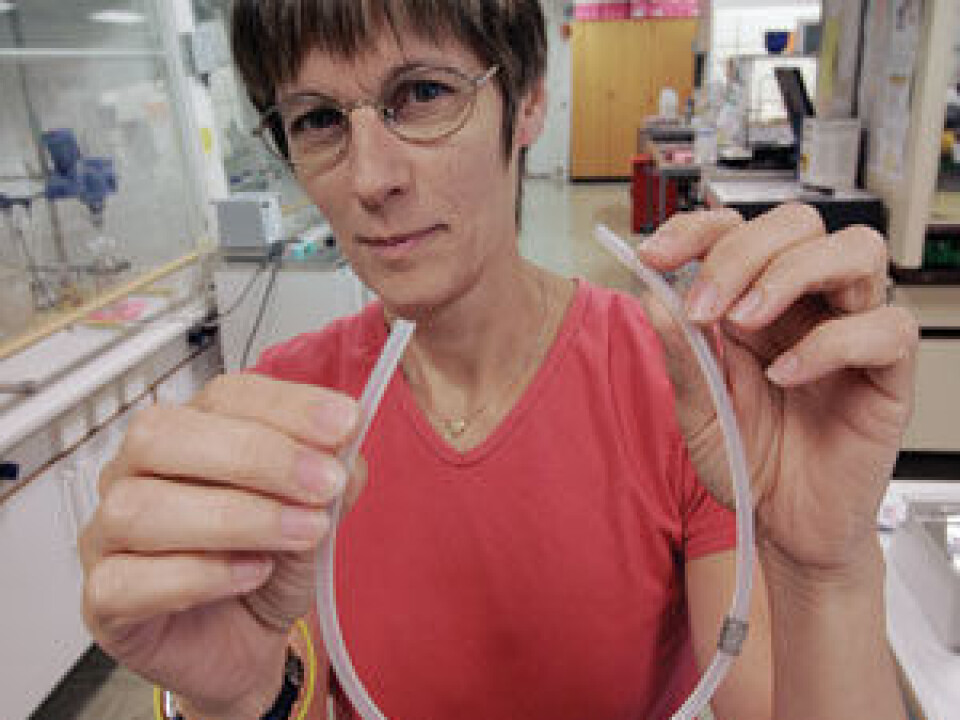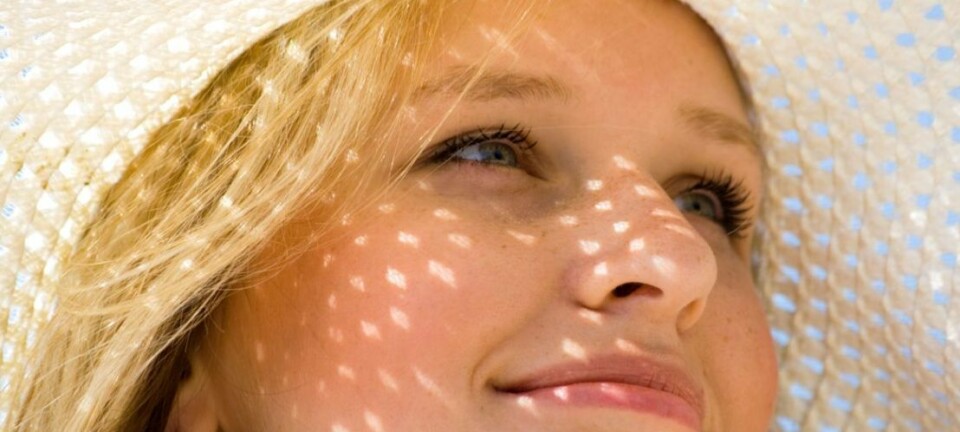An article from Norwegian SciTech News at SINTEF

Hi-tech skincare from the sea
New cosmetic products based on nanotechnology and highly adapted production techniques from the Dead Sea are on the way.
Denne artikkelen er over ti år gammel og kan inneholde utdatert informasjon.
The Dead Sea contains 21 different minerals that have long been known to have positive effects on ailments such as psoriasis, acne, and skin damaged by allergies and the sun.
A major cosmetics company, Dead Sea Laboratories, already produces a range of skincare products based on minerals and mud from the Dead Sea.
Now, however, European researchers and companies aim to microencapsulate minerals from the sea.
Patients with similar skin conditions respond differently to similar treatments, which is why Dead Sea Laboratories wants to develop more effective treatments via small-scale production lines. This will allow creams, oils and salves to be tailored to the skin of the individual patient.
Supplementary treatments

The market for skin creams is large, given that perhaps two or three percent of the world’s population suffer from psoriasis. Skin allergies, sun-damaged skin, acne and wrinkles are other conditions for which people will buy treatments.
“It is important to emphasize that we are not talking about a new drug here. These new skin products will supplement pills and other medicines that patients are already taking,” says Ruth Baumberger Schmid at SINTEF, one of the project partners.
She says that goal-directed efforts to develop cosmetic applications of a product suit the Norwegian researchers well.
Protection
SINTEF has taken on the task of developing good microcapsules for the minerals. There is also talk of microencapsulating vitamin A, which is known to have a positive effect on diseased skin. One possibility is to put both drugs in the same capsule; another would be to have two types of capsules in the cream.
“We are focusing on making the microcapsules in such a way that they will be independent of the substance to be encapsulated. And we are talking here about tiny capsules, only 300 to 400 nanometres in diameter,” says Schmid.
"They can neither be seen nor felt.”
“Why microcapsules?”
“Encapsulation means protection. For example, vitamin A is unstable in air and water, and when it is heated. Also, taking too little has no positive effect on health, while too big a dose can cause itching and irritation. By using microencapsulation we can deliver the right dose of vitamin A to the correct place on the skin,” Schmid explains.
Schmid says that the capsules must be just the right size. The capsules produced in SINTEF’s laboratory are slightly larger than nanocapsules.
The capsules penetrate the outermost layer (the stratum corneum) of the epidermis, but do not go further into the inner layer (the dermis). If they are too large (micron capsules), they will not stick to the skin, but can be washed off. If they are too small, they can pass through the skin and into the body, which is not what is wanted.
Range of tasks
A number of partners are involved in the project, which includes European research institutions and small and medium-sized enterprises. The consortium will use biotechnological techniques to identify skin properties that are characteristic of particular diseases, and then nanotechnology to develop suitable treatments.
The next steps will involve testing the products for toxicity and efficacy, setting up a pilot plant for production, and developing databases to match skin type to the most appropriate treatment for the individual patient.
The research partners are responsible for different tasks. While Belgian scientists are growing artificial skin so they can test new products directly on psoriasis skin cells, a German partner is designing a completely new small-scale production line. Two Spanish and Israeli partners are looking for relevant skin properties and for signs of disease, while another Spanish partner is testing the products for potential toxic effects.
Selection
Ruth Baumberger Schmid says that the project has a long way to go before it reaches its goals.
“We started out in 2008 with several types of nanocapsules and specific skin characteristics. Our analyses of toxicity and efficacy gradually reduced that number, and the partners have now agreed on seven or eight types of capsule and a few skin parameters, of which three or four will be clinically tested.”
“For our part, we need to show that our capsules do not contain any residues of harmful substances that are banned in cosmetic products,” she says.
“We haven’t decided yet which capsules will be chosen for final production.”
The months until autumn 2012 will be put into scaling up and clinical studies, and testing selected prototypes.

































